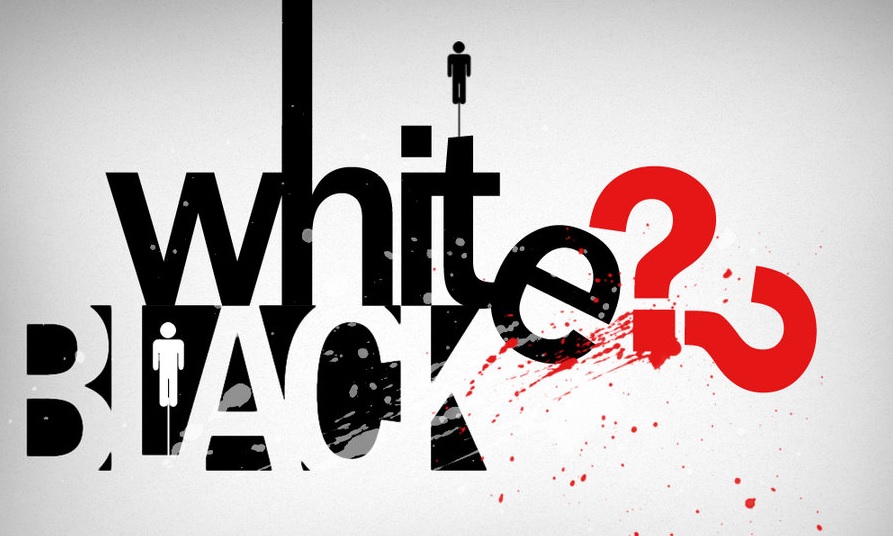Nothing, repeat, nothing, has been resolved in Ferguson — or in the America for which Ferguson iconically stands. A grand jury, of three Blacks and nine whites, is presently deciding whether the cop who gunned down unarmed teenager Michael Brown should be charged with anything. Eyewitnesses there are aplenty, most of whom agree that the officer, Darren Wilson, pursued the kid and fired a fusillade of shots into Brown. His body was then left on the street for hours, like lynched Black bodies in previous times left hanging from trees and bridges.
But all that makes no never-mind. Jubilant racists have now collected serious money for the cop, exceeding by half what has been collected for the family of the victim. To the slogan “Hands up! Don’t Shoot!” they respond: “Shoot! Shoot! Shoot!“
Brown was large and Black — according to Republican flak Ben Stein, “armed with his incredibly strong, scary self.” For white America, that suffices: being shot on sight was the only safe option.
In fact, the Black population of Ferguson is no different from the Black populations of other American towns and cities: oppressed, poor, their boundaries (social and geographical) heavily policed. In Randy Newman’s words, they’re “free to live in a cage.”
Where but in the US are young Black boys given a facts-of-life lecture by their parents, not about the birds and the bees, but on how to survive encounters with the police? This is so commonplace that it even has a name — “the talk.” Racism enfilades American society, informing actions, instincts and social relations, infesting unconscious impulses, ensuring that Blacks are kept in their place and that the uppity ones are punished. It’s Jim Crow at a higher level, and the on-going carnage of Black kids at the hands of white cops is nothing more or less than a new form of lynching.
Yes, there are mixed marriages, and successful, rich Blacks, conservative Blacks, Black police officers (some of whom have got the goods on what’s going on), and even a Black President. But these are not representative of the stubborn American reality. The chasm persists: the racial profiling, the unfettered violence of the police, a grossly discriminatory justice system, and, in general, a complex of power relations that racializes a group and ensures their subaltern status, with everything from microaggressions to all-pervasive social and economic discrimination, to disproportionate rates of incarceration, to the guns and tanks of Ferguson, Missouri.
Ferguson, that microcosm of America, is not only the scene of open, casual racism and racist brutality. It’s the site of a massive shakedown racket as well. Nothing is so effective at immiserating a population than robbing them blind. A system of tribute to the masters may be arranged differently than in the past, but it’s still in full swing, and has the same effect: to establish and maintain dominance.
Children learn early in Ferguson that the police are dangerous, cowardly and cruel. They can illegally arrest journalists, toss tear gas grenades into people’s backyards for the hell of it, brutalize peaceful bystanders, ponce about in camo and generally act like the savages they clearly are. And of course they can mow down unarmed Black teenagers and expect to be rewarded for it.
But let’s not pick solely on Ferguson. In New Iberia, Louisiana, a Black kid, his hands cuffed behind his back, was shot in a police cruiser. “He shot himself in the back,” said the cops. “No,” said the coroner, “he had to have shot himself in the front, because that’s where the gunshot residue is.” The deadly surrealism of life as a young Black male in America: not only are you weaponized simply by being born, but you’re apparently made of rubber as well.
In Beavercreek, Ohio, an open-carry state, a Black man wanting to buy a toy gun was executed without warning by police, called to the Walmart where he was shopping. (The idiot who made that call would likely be unhappy with this. But I’m a great believer in self-defence.)
You don’t get at racism in America by delegating the overseer work to various Ron Johnsons in the white folks’ yard. The truth? I’m not sure how the problem gets seriously addressed, without dealing with class as well (see this excellent article, addressing race/class intersections in St. Louis). But of one thing I’m certain: we progressives will continue to talk about it.
[Image credit: (cropped)]




